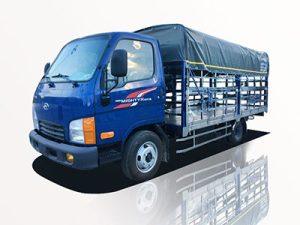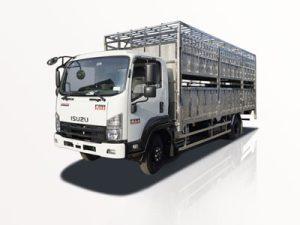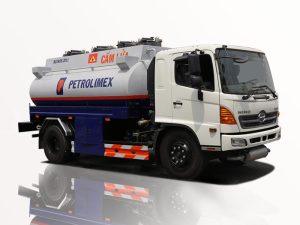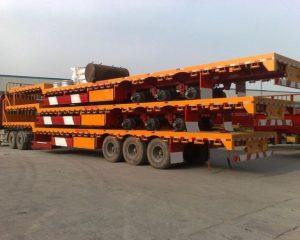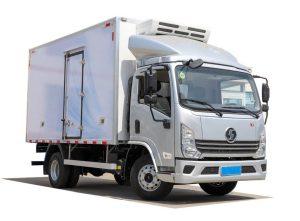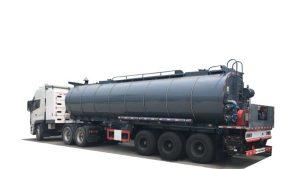Monday to Saturday - 8:00 -17:30
Understanding the Importance of Fire Trucks at Airports
Airports are critical infrastructures that manage a vast amount of air traffic daily. However, with this high volume of activity comes the inherent risk of emergencies, particularly fires. Fire trucks at airports are essential for ensuring safety and prompt emergency response. In this article, we will explore the significance, types, and operational dynamics of fire trucks at airports, along with practical insights and FAQs to deepen your understanding.
Why Fire Trucks are Critical at Airports
Airports are not just ground terminals; they are complex ecosystems with unique safety challenges. Fire trucks at airports play a crucial role in mitigating risks associated with potential fire hazards. Below are some key reasons highlighting their importance:
1. High Risk of Aircraft Fires
Aircraft can catch fire during various phases of operation, such as landing, takeoff, or refueling. The presence of fire trucks enables rapid response, reducing the potential for catastrophic outcomes.
2. Availability of Hazardous Materials
Airports manage several hazardous substances, including aviation fuel, chemicals for aircraft maintenance, and cleaning agents. Fire trucks are equipped to handle fires caused by these materials, ensuring that the threat is contained quickly.
3. Passenger Safety
With thousands of passengers transiting through airports, ensuring their safety during potential emergencies is paramount. Fire trucks and their crews are trained to handle passenger evacuations efficiently and safely.
4. Protection of Airport Infrastructure
Airport buildings, terminals, and hangars are vulnerable to fires. Deploying fire trucks rapidly can control fires to prevent significant damage or operational disruptions.
5. Enhancing Emergency Response Training
Fire trucks serve as a crucial training resource for airport emergency personnel, enabling them to practice fire response strategies in realistic scenarios.
Types of Fire Trucks Used at Airports
Fire trucks used at airports come in various types, each designed to meet specific operational requirements. Here are the primary categories:
1. Aircraft Rescue and Firefighting (ARFF) Trucks
ARFF trucks are specialized fire vehicles equipped with firefighting tools, water, and foam systems. These trucks can quickly tackle aircraft fires and are essential at every major airport.
Key Features of ARFF Trucks
- Fast response capabilities
- Foam dispensing systems for liquid fuel fires
- High water capacity
- Off-road capabilities to reach aircraft quickly
2. Structural Fire Trucks
These trucks are similar to municipal fire engines and are used primarily to manage fires that occur in terminals and airport buildings. They are equipped with water pumps, hoses, and various firefighting equipment.
3. Quick Response Vehicles (QRV)
QRVs are smaller vehicles designed for rapid deployment, allowing fire personnel to reach incidents faster than larger trucks. They often carry essential firefighting tools but aren’t equipped with significant water supplies.
Operational Dynamics of Fire Trucks at Airports
Understanding how fire trucks operate at airports helps grasp their effectiveness. Here are key operational dynamics involved:
1. Response Time and Protocols
Every airport has predetermined response times for different emergency scenarios. Fire trucks must reach the scene within a specified time to mitigate damage effectively.
Response Time Standards
| Emergency Type | Response Time Requirement |
|---|---|
| Aircraft Emergency | 3 minutes |
| Terminal Fire | 5 minutes |
| Wildfire Threat | 7 minutes |
2. Training Programs for Fire Personnel
Firefighters at airports undergo extensive training programs to deal with aircraft fires, chemical incidents, and other emergencies. Regular drills are crucial for honing their skills.
3. Coordination with Other Emergency Services
Airport fire services must coordinate with local fire departments, medical responders, and law enforcement to manage emergencies effectively. This ensures a holistic approach to emergency management.
Maintenance and Safety Checks for Fire Trucks
To ensure fire trucks are always operational, airports implement stringent maintenance checks and safety protocols. Regular inspections can prevent equipment failures during emergencies.
1. Daily Checks
Fire personnel perform daily checks on vehicles to ensure they are ready for use. This includes inspecting fluid levels, tire pressure, and firefighting equipment.
2. Monthly Maintenance
A more thorough inspection occurs monthly, covering mechanical components, aerial ladders, and firefighting systems.
3. Annual Servicing
Annual servicing involves comprehensive assessments, including engine performance and complete operational capacity tests.
Challenges Faced by Airport Fire Services
While fire services at airports are crucial, they also face various challenges that can hinder their efficiency:
1. Reduced Visibility in Adverse Weather
Fog, rain, and snow can impair visibility significantly, making it challenging for firefighters to respond quickly and effectively.
2. Maneuverability Issues
Airports are often congested with vehicles and equipment, which can create obstacles for heavy fire trucks trying to navigate quickly to the site of an emergency.
3. Budget Constraints
Many airports face budget limitations, which can restrict resources available for fire prevention, training, and equipment upgrades.
Fire Safety Regulations at Airports
Fire safety regulations at airports are designed to ensure safety and preparedness. Regulatory bodies set standards for equipment, response times, and training protocols.
1. International Civil Aviation Organization (ICAO) Standards
The ICAO sets fundamental safety standards that include requirements for fire services at airports worldwide, acting as a baseline for regional regulations.
2. National Fire Protection Association (NFPA) Guidelines
The NFPA provides detailed guidelines on fire apparatus and operational efficiency, ensuring airports remain compliant with safety regulations.
3. Local Policies and Procedures
Individual airports may implement additional policies to address unique risks or needs within their jurisdiction, complementing broader regulatory frameworks.
Practical Tips for Improving Airport Fire Safety
Improving fire safety procedures around fire trucks at airports can enhance emergency preparedness. Here are some practical suggestions:
1. Regular Training and Drills
Conduct routine training and emergency drills for all firefighting and emergency response personnel. Realistic training scenarios can prepare them for various types of incidents.
2. Invest in Advanced Technology
Utilize modern firefighting equipment and technology, such as drones for aerial assessments or thermal imaging cameras for fire detection, to enhance response capabilities.
3. Conduct Fire Risk Assessments
Regularly assess fire hazards associated with airport operations and facilities to identify and mitigate risks proactively.
Frequently Asked Questions (FAQs)
1. What is the primary function of fire trucks at airports?
The primary function of fire trucks at airports is to rapidly respond to aircraft emergencies, fires, and other incidents to ensure the safety of passengers, crews, and infrastructure.
2. How quickly must fire trucks respond to emergencies at airports?
Airports have established response time standards, typically requiring fire trucks to reach aircraft emergencies within 3 minutes.
3. What training do airport firefighters undergo?
Airport firefighters undergo extensive training that includes responding to aircraft fires, handling hazardous materials, and conducting passenger evacuations.
4. What types of equipment do airport fire trucks carry?
Airport fire trucks carry a range of equipment, including water and foam systems, hoses, ladders, medical supplies, and specialized tools for aircraft emergencies.
5. How are fire safety regulations enforced at airports?
Fire safety regulations are enforced through inspections, compliance with ICAO and NFPA guidelines, and by implementing local policies tailored to specific airport needs.
6. What challenges do fire services face at airports?
Some challenges include adverse weather conditions, maneuverability difficulties due to congestion, and budget constraints that limit resources for fire prevention and equipment.


